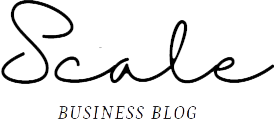The Benefits of Automating Your Liquid Packaging Business
The Benefits of Automating Your Liquid Packaging Business
Some businesses can be hesitant to adopt automated solutions due to the upfront costs of new equipment and personnel training. Nevertheless, automated packaging can have essential advantages, and innovation makes automation of more parts of the process simpler.
For product manufacturers, automated packaging lines can be pretty advantageous. These technologies can minimize the risk of ergonomic injuries by taking on a load of repetitive and tiresome operations, liberating personnel for higher-value work where they are more urgently needed. Here are the top three benefits of automation:
Improved Quality Control
Automation systems in the past weren’t always reliable enough to fully automate the task of managing packaging line quality control. The taxing and repetitive task of examining every item was left to human personnel. This is changing as new technology is developed, particularly machine vision utilizing artificial intelligence (AI), which enables computers to “see” faults as human workers do.
The capacity of automated quality assurance (QA) systems to identify defects doesn’t fluctuate throughout a shift because of their constant activity.
Improved Production Speed
Businesses may significantly increase production efficiency and product output by implementing the proper automation solution. Additionally, automated packaging systems can multitask and combine several elements of the packing procedure into a single step, such as labeling and sealing. By doing this, these solutions may free up more than one staff.
Therefore, these technologies can enhance performance and free people to concentrate on work like shipping, receiving, and selecting that require human labor or just benefitting from it.
Reduced Labor Costs
Packaging firms are already feeling the effects of a more competitive labor market as the US unemployment rate has reached record lows and consumer demand has continued to climb. Automation is one potential answer to this issue. Businesses may ensure that workers are only recruited when needed by automating as much of the packaging line as possible.
Examples of Automated Equipment
Labeling Machines
Different goods, products, containers, or packages can be labeled utilizing a labeling machine to dispense or apply labels. Some labeling devices consist of printing capabilities and dispensing or applying labels.
Numerous labeling machines are available on the market, from high-production equipment that enables complete print automation and uses the process to manual devices that provide straightforward label dispensing. Browse the front and back labelers machine here.
Filling Machines
Bottle filling machines are used for packaging, primarily for food and beverage and sometimes for other goods. Depending on the product, a bottle or a pouch can be filled with them.
The packaging business uses a variety of filters. The type of food or beverage filling equipment to be used is often decided by the kind of product to be filled, speed requirements, expectations for quality and shelf life, resource availability, technological viability, and numerous other elements.
Capping Machines
Bottle capper machines that are entirely and semi-automatic operate more quickly and efficiently. For example, a bottle capper that automatically closes bottles in line might produce up to 350 caps per minute. As a result, more items are on the market, leading to increased sales. There are fewer supply chain limitations due to a simplified production process.
Wrap Around Labeling Machine
Wrap around the product labeling systems apply labels by rolling them onto the container’s surface. This application technique is less complex than pick-and-place techniques and produces results comparable to shrink-wrap. Although wrap-around labels rule the marketplace for round bottles, they may be applied to virtually any container.
The label’s printing area is maximized by covering it around the container’s perimeter (it sticks to plastic, glass, metal, and cardboard). This method allows you to include all pertinent brand information on a single label when packaging beverages.
Final Thought
Workers in the manufacturing and packing sectors regularly encounter musculoskeletal disorders (MSDs), also known as ergonomic injuries, due to the repeated nature of their work and the length of their shifts.
Employees’ natural risk of MSDs can be reduced by minimizing the number of repetitive tasks they must carry out. Process automation solutions are already an excellent fit for repetitive or tedious operations, which frequently benefit from uniformity. Using automation in place of employees during process phases that involve repetitive motion can boost productivity and reduce the chance of employee injury.








